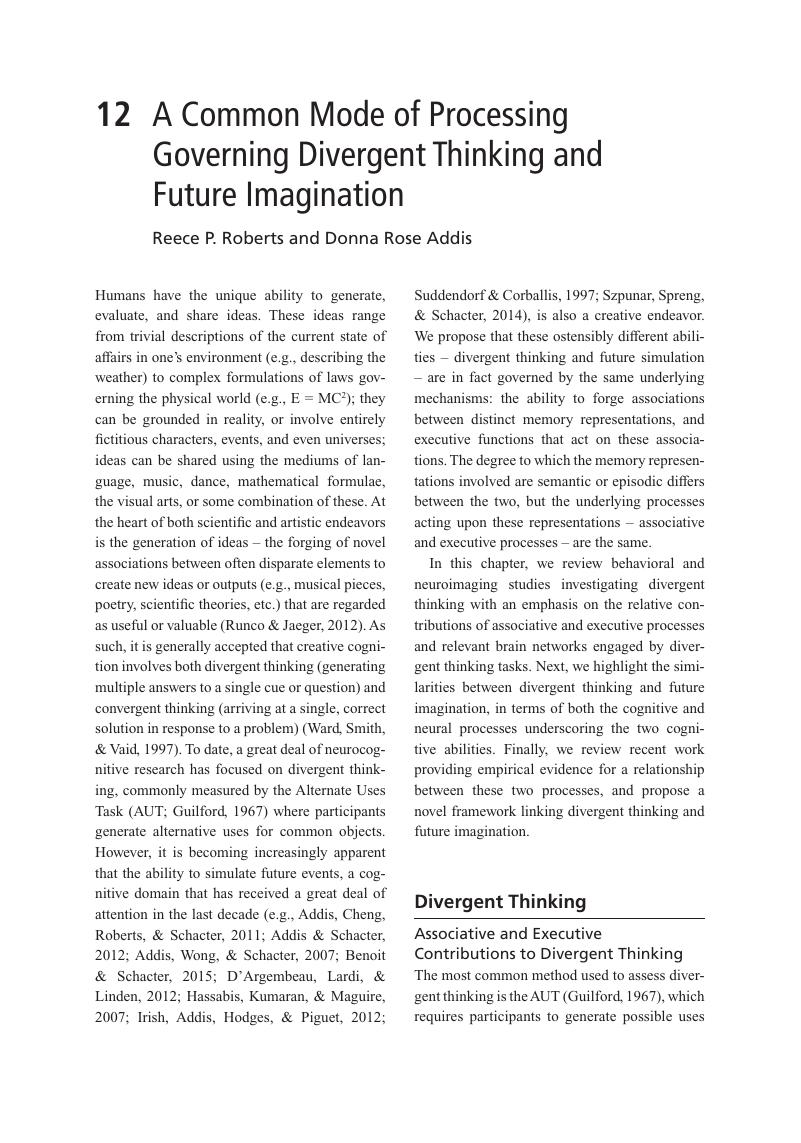Book contents
- The Cambridge Handbook of the Neuroscience of Creativity
- The Cambridge Handbook of the Neuroscience of Creativity
- Copyright page
- Contents
- Figures
- Tables
- Contributors
- Acknowledgments
- Introduction
- Part I Fundamental Concepts
- Part II Pharmacology and Psychopathology
- Part III Attention and Imagination
- 9 Attention and Creativity
- 10 Internally Directed Attention in Creative Cognition
- 11 The Forest versus the Trees: Creativity, Cognition and Imagination
- 12 A Common Mode of Processing Governing Divergent Thinking and Future Imagination
- Part IV Memory and Language
- Part V Cognitive Control and Executive Functions
- Part VI Reasoning and Intelligence
- Part VII Individual Differences
- Part VIII Artistic and Aesthetic Processes
- Index
- References
12 - A Common Mode of Processing Governing Divergent Thinking and Future Imagination
from Part III - Attention and Imagination
Published online by Cambridge University Press: 19 January 2018
- The Cambridge Handbook of the Neuroscience of Creativity
- The Cambridge Handbook of the Neuroscience of Creativity
- Copyright page
- Contents
- Figures
- Tables
- Contributors
- Acknowledgments
- Introduction
- Part I Fundamental Concepts
- Part II Pharmacology and Psychopathology
- Part III Attention and Imagination
- 9 Attention and Creativity
- 10 Internally Directed Attention in Creative Cognition
- 11 The Forest versus the Trees: Creativity, Cognition and Imagination
- 12 A Common Mode of Processing Governing Divergent Thinking and Future Imagination
- Part IV Memory and Language
- Part V Cognitive Control and Executive Functions
- Part VI Reasoning and Intelligence
- Part VII Individual Differences
- Part VIII Artistic and Aesthetic Processes
- Index
- References
Summary

Information
- Type
- Chapter
- Information
- The Cambridge Handbook of the Neuroscience of Creativity , pp. 211 - 230Publisher: Cambridge University PressPrint publication year: 2018
References
Accessibility standard: Unknown
Why this information is here
This section outlines the accessibility features of this content - including support for screen readers, full keyboard navigation and high-contrast display options. This may not be relevant for you.Accessibility Information
- 11
- Cited by
